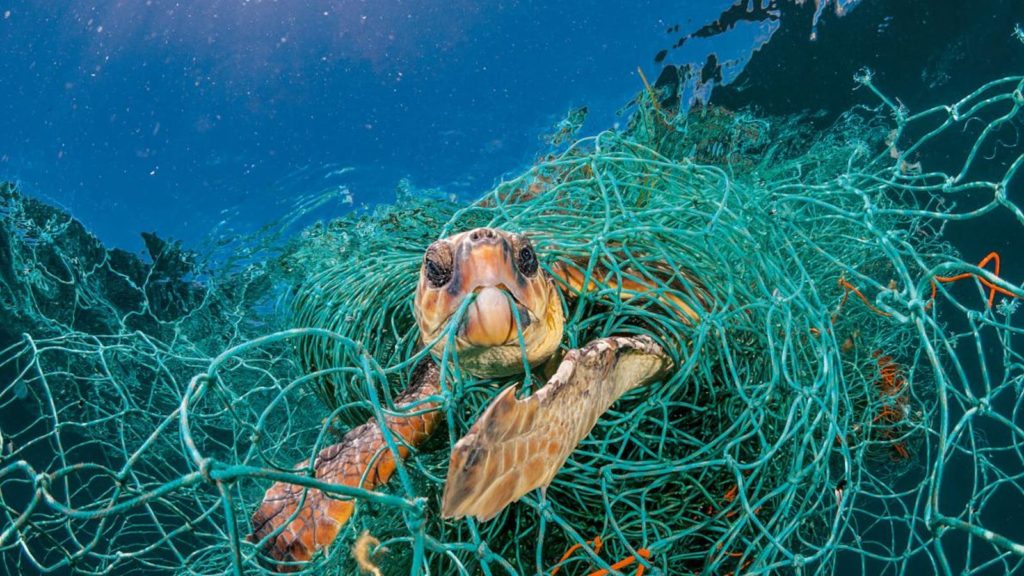Effects of ocean plastic on fauna

In the oceans, the effects of plastic on animals and the environment are devastating. At the rate at which this polluting is going, we only have a limited time to protect our own species before it is too late.
Plastic is a product that must be controlled to avoid this waste management crisis. The ease of use of plastic objects is not an excuse to explain the current environmental crisis.
The first effect of plastic waste is a visual impact: waste washed up on the banks of rivers, beaches, heaps of floating objects at sea … But some less directly visible effects are also more severe.
The so-called “ghost” nets, abandoned or accidentally lost, very resistant, are a significant cause of mortality in animals; NGOs and associations estimate 100,000 the number of marine mammals and a million that of birds that die by strangulation or suffocation in these traps around the world each year.
The ingestion of plastic waste by animals
Another cause of death is the ingestion of plastic waste, which affects around 660 species. Seabirds bite the floating pieces of plastic, and turtles mistake them for jellyfish.
Large baleen cetaceans filter seawater, ingesting large amounts of microplastics. Molluscs, such as mussels, filter m3 of water containing microparticles.
Plankton, invertebrates, or small fish can also ingest Micro-waste. The ingestion rate remains very anecdotal for the species consumed (less than 0.01% of commercial fish), and there is no trace of it on our plates.
Because if micro-waste can block the digestive and respiratory systems of specific individuals, they are not digested due to the lack of suitable enzymatic equipment.
Due to their components (plasticizers, additives) and the possible rejection of adsorbed contaminants, plastics are also suspected of being a source of water contamination.
But in reality, the concentrations measured are too low for the substances released during their degradation to constitute a significant risk of toxicity. The rate of chemical contaminants (PCBs, pesticides, etc.) remains limited, but more dangerous for the filtering of marine organisms that accumulate them.
Transport of invasive species via plastic
For some health experts, the real danger is the alteration of the balance of ecosystems caused by the transport of invasive species over long distances.
How can we not consider as a significant problem the arrival of 54 new species on the coasts of Canada, fixed on large debris, having circulated in the North Pacific for months after the 2011 tsunami in Japan?
Particular waste materials and various debris are indeed active floating supports for bacteria (specific pathogens for marine organisms such as for humans, vibrios for example), single-celled or invertebrates, worms, insects … capable of acclimatizing in an area other than their original biotope, particularly in relation to climate change.
Just thinking of all the waste management services that are required to clean out this overwhelming pollution could make anyone’s head spin! We must stop creating so much junk so that we have a clean planet and not a mess.
The discovery of the insect Halobates sericeus living on floating plastics in the Pacific is a perfect illustration of this. A study carried out in 2005 showed that the spread of species in subtropical waters almost doubled due to debris. It has tripled in temperate waters.
Not enough studies have been performed on this novel topic, but the risk is there, with its environmental, health and economic consequences (invasive algae, bacteria in oyster or fish farming areas …).
